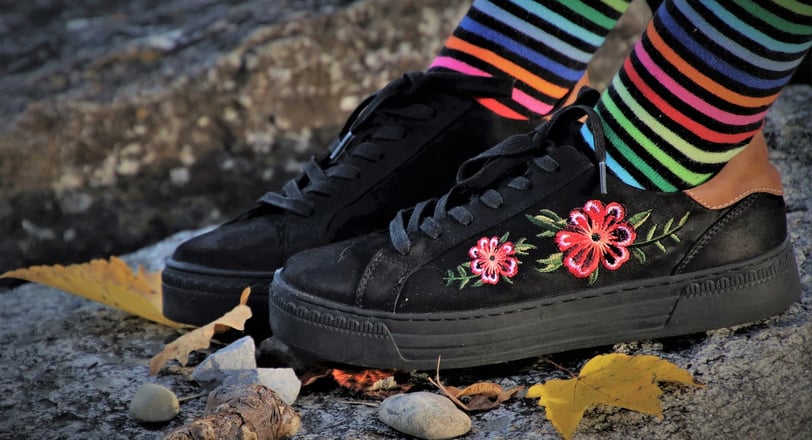Sustainable Design in Embroidery: Innovations and Eco-Friendly Practices
Discover how embroidery is going green! 🌿✨ Our latest post explores eco-friendly materials, circular design concepts, and zero-waste initiatives in embroidery. Learn about organic threads, natural dyes, and creative upcycling techniques. Plus, check out innovative ideas like biodegradable hoops and energy-efficient machines. Join us in making embroidery more sustainable! #SustainableEmbroidery #EcoFriendlyDesign #CircularCraft #ZeroWaste #GreenInnovation
8/19/20243 min read


In the ever-evolving world of design, sustainability is increasingly becoming a cornerstone of innovation. Embroidery, a craft celebrated for its intricate beauty and craftsmanship, is also embracing this movement towards more eco-conscious practices. In this article, we'll explore how sustainable design principles can be applied to embroidery, examining eco-friendly materials, circular design concepts, and zero-waste initiatives, while introducing fresh, novel ideas that haven’t been widely discussed before.
Eco-Friendly Materials in Embroidery
1. Organic and Recycled Threads
One of the simplest ways to make embroidery more sustainable is by choosing eco-friendly threads. Organic cotton and recycled polyester threads are excellent alternatives to traditional materials. Organic cotton is grown without harmful pesticides or synthetic fertilizers, while recycled polyester is made from post-consumer plastic bottles.
2. Natural Dyeing Techniques
Another area where sustainability can be integrated is in the dyeing process. Traditional dyeing methods often involve toxic chemicals and large amounts of water. By adopting natural dyeing techniques—using plant-based dyes from vegetables, fruits, and herbs—embroidery projects can significantly reduce their environmental impact. For example, dyeing fabrics with turmeric, beetroot, or avocado pits not only reduces chemical waste but also creates unique, organic colorways.
3. Sustainable Fabrics
Using sustainable fabrics, such as hemp, bamboo, and organic linen, is another step towards eco-friendly embroidery. These materials are biodegradable and often require less water and fewer resources to produce compared to conventional fabrics. Hemp, for instance, grows quickly and does not need pesticides, making it a viable and sustainable choice for embroidery.
Circular Design in Embroidery
1. Modular and Reversible Designs
Circular design principles aim to create products that can be used for longer periods and eventually recycled or repurposed. In embroidery, this can translate into modular designs where individual pieces can be easily replaced or updated without discarding the entire item. Additionally, reversible embroidery designs allow for two uses in one piece, extending its life and reducing waste.
2. Upcycling and Repurposing
Upcycling is a powerful way to incorporate circular design into embroidery. By repurposing old garments or textiles into new embroidered creations, artisans can give new life to materials that might otherwise end up in landfills. For instance, old denim jeans can be transformed into embroidered patches or decorative elements, adding value to otherwise discarded items.
3. Design for Disassembly
Designing with disassembly in mind means creating pieces that can be easily taken apart to separate materials for recycling. In embroidery, this could involve using detachable elements or fastenings that allow different parts of a garment or textile to be removed and recycled separately. This approach simplifies the recycling process and ensures that each component can be processed appropriately.
Zero-Waste Initiatives in Embroidery
1. Pattern Optimization
A zero-waste approach begins with pattern optimization. By meticulously planning and arranging patterns, embroiderers can minimize fabric waste. Digital tools and software can assist in creating patterns that fit together seamlessly, ensuring that every inch of fabric is utilized efficiently.
2. Scrap Utilization
Utilizing fabric scraps creatively can prevent waste. Embroidery enthusiasts can incorporate small pieces of fabric into intricate patchwork designs or create accessories like keychains, brooches, or coasters. These smaller items can showcase the beauty of leftover materials and provide additional revenue streams for artisans.
3. Community Initiatives
Participating in or initiating community projects that focus on sustainable embroidery practices can amplify the impact. For instance, workshops on sustainable embroidery techniques, fabric swap events, or collaborative upcycling projects can help spread awareness and encourage more people to adopt eco-friendly practices.
Innovative Ideas for Sustainable Embroidery
1. Biodegradable Embroidery Hoops
Imagine embroidery hoops made from biodegradable materials such as bamboo or recycled bioplastics. These hoops would break down naturally at the end of their life cycle, reducing the environmental impact associated with plastic waste.
2. Digital Fabric Printing
Combining embroidery with digital fabric printing could also offer sustainable benefits. Digital printing uses less water and produces fewer chemical by-products compared to traditional methods. Integrating this with embroidery can reduce waste and enhance design flexibility.
3. Energy-Efficient Embroidery Machines
Advancements in technology could lead to the development of energy-efficient embroidery machines. These machines could use less power and incorporate renewable energy sources, further aligning with sustainable design goals.
Conclusion
As embroidery continues to evolve, embracing sustainable design principles can significantly impact the environment while preserving the art form's integrity. By focusing on eco-friendly materials, circular design practices, and zero-waste initiatives, the embroidery community can contribute to a more sustainable future. Exploring innovative ideas such as biodegradable hoops and energy-efficient machines can further enhance these efforts, ensuring that the beauty of embroidery does not come at the expense of our planet. Through conscious choices and creative solutions, embroidery can become a leading example of how traditional crafts can adapt to the modern age of sustainability.
